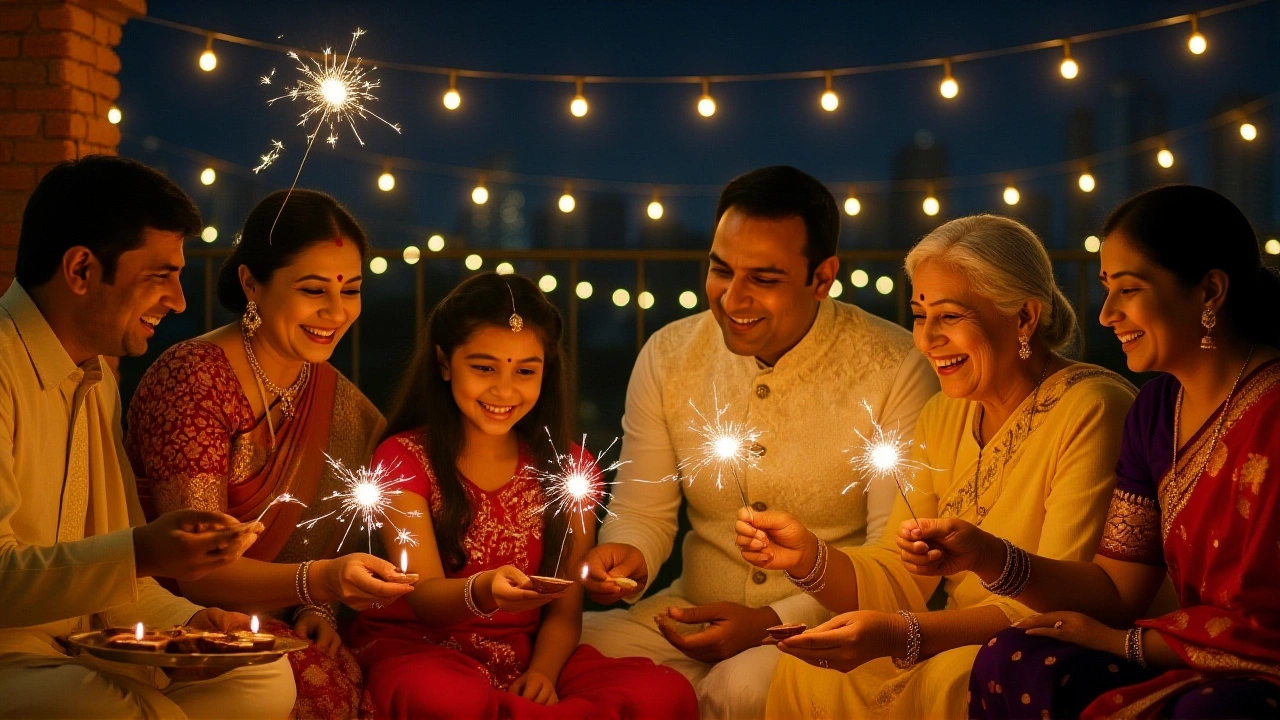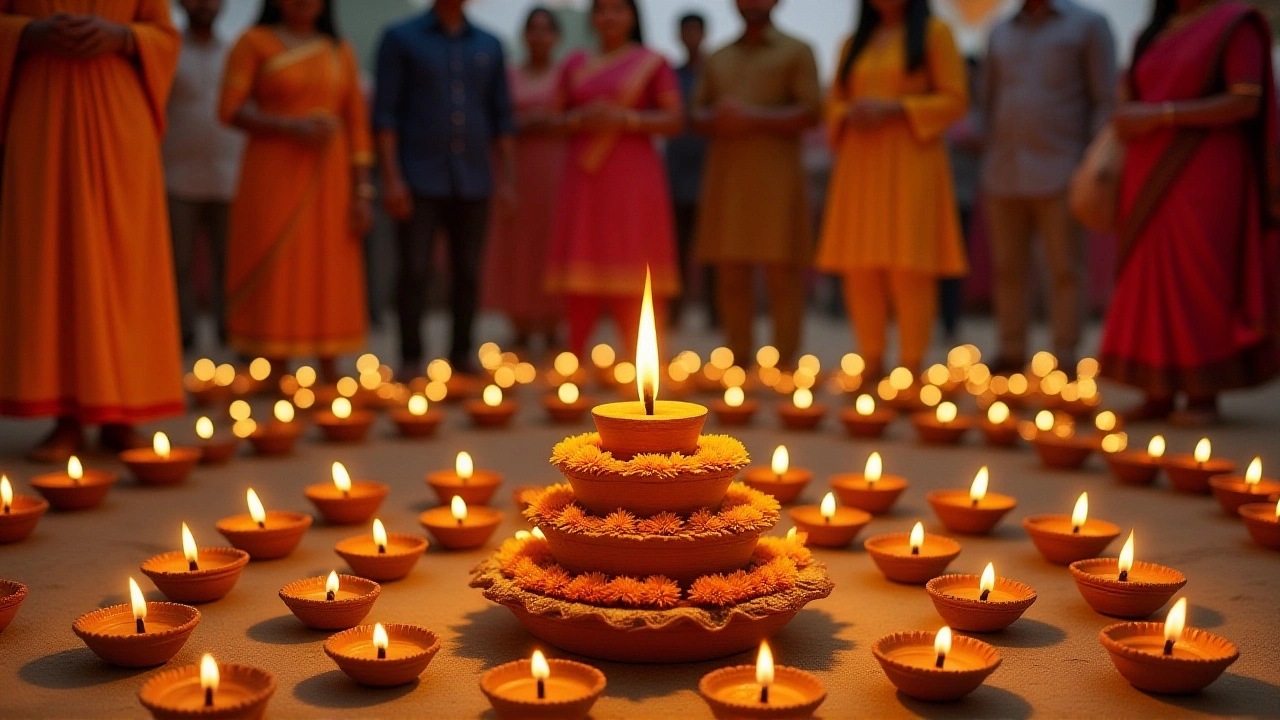When Dr. Anurag Aggarwal, head of emergency medicine and trauma at Fortis Hospital warned that the most common home‑remedy burns—like slathering toothpaste or butter—"delay healing and boost infection risk," it sent a clear signal that this year’s Diwali safety measures are anything but optional. On the same breath, Dr. Niranjan Hiremath, a cardiologist frequently quoted by Hindustan Times, urged citizens to invest in air purifiers for the "peak firecracker hours" that can spike particulate matter by over 150 %. The guidelines, backed by a recent Supreme Court of India order, limit the use of government‑approved green crackers to 6:00‑7:00 am and 8:00‑10:00 pm on both Diwali Eve and Diwali day, with Delhi Police patrolling streets in tandem with the Petroleum and Explosives Safety Organisation (PESO) and other agencies.
Background: Why 2025 Calls for a New Approach
Diwali, the festival of lights, traditionally sees a surge in firecracker sales that historically push national PM2.5 levels above 300 µg/m³ in the National Capital Region. Last year, a study by the National Environmental Engineering Research Institute (NEERI) linked the spike to a 30 % rise in emergency room visits for asthma attacks among children under 12. Those figures prompted courts and health ministries to revisit the earlier, more relaxed regulations that allowed all‑night fireworks.
Legal Framework & Enforcement for 2025
The Supreme Court’s recent directive mandates that only PESO‑certified green crackers—each stamped with a QR code verifying low‑emission composition—may be sold between October 23 and October 24. Approximately 140 retailers in Delhi have received temporary licences, and a similar rollout is underway in Noida. Retailers must either return unsold stock or destroy it in water within two days after Diwali, a move designed to curb the infamous "black market" that fuels illegal, high‑smoke crackers.
Enforcement teams, coordinated by Delhi Police’s Traffic and Fire Departments, will use handheld scanners to verify QR codes on‑site. Violators face fines up to ₹50,000 and possible seizure of contraband. The police have also issued a public notice reminding residents that lighting crackers near hospitals, schools, and densely populated housing complexes is prohibited.
Medical Advice: Treating Burns and Guarding Cardiac Health
When a burn occurs, the first‑step protocol—endorsed by both Fortis Hospital and the Indian Medical Association—is to run cool (not cold) tap water over the area for 10‑15 minutes. After cooling, the wound should be covered with sterile gauze; applying butter, oil, or ice can worsen tissue damage, according to Dr. Aggarwal. For any burn covering the face, hands, or genitals, or that blisters extensively, seek immediate medical attention.
Cardiac patients face a double threat: the sudden blast of sound can trigger arrhythmias, while inhaling nitrogen oxides and sulfur dioxide can exacerbate coronary artery disease. Dr. Hiremath suggests staying hydrated with water infused with mint or lemon, and keeping short‑acting inhalers and nitroglycerin tablets within reach during the fireworks window. He also recommends monitoring for chest pain, unexplained fatigue, or shortness of breath and calling emergency services if symptoms appear.
Managing Air Quality: Steps for Vulnerable Groups
Green crackers are not pollution‑free, but they emit roughly 40 % less particulate matter than conventional fireworks. Nonetheless, NEERI data shows that even approved crackers can raise ambient PM2.5 by 80 µg/m³ during the two-hour bursts. For children with asthma, the elderly, and anyone with chronic obstructive pulmonary disease, the best defence is a combination of indoor air filtration and limited exposure.
- Place an HEPA‑rated air purifier in the main living area at least one hour before the first approved burst.
- Close windows and doors during the 6:00‑7:00 am and 8:00‑10:00 pm windows; open them again afterward to allow fresh air circulation.
- Use battery‑operated LED lights instead of scented candles or incense sticks, which can add volatile organic compounds (VOCs) to the mix.
NDTV health experts also flag that cleaning dust and fragrance sprays left over from pre‑Diwali decorations can aggravate eczema and trigger asthma attacks. Their advice: finish major cleaning at least a week before the festival, and store scented products in sealed containers.

Practical Firecracker Safety Checklist
- Buy only QR‑coded green crackers from PESO‑licensed retailers.
- Keep a bucket of water or a sand pit nearby before lighting anything.
- Wear closed shoes and avoid loose clothing; never use alcohol‑based sanitizers on hands before handling crackers.
- Light one cracker at a time, step back immediately, and never attempt to relight a dud.
- Supervise children at all times; if a cracker fails, wait at least five minutes before approaching.
- After use, submerge hand‑held crackers in water for at least ten minutes before disposal.
- Maintain a Diwali first‑aid kit: sterile gauze, silver sulfadiazine ointment, saline eyewash, digital thermometer, instant cold pack, and inhalers for asthmatics.
What to Do After the Fireworks
Once the final burst fades, families should inspect the neighborhood for stray crackers, especially near schools and hospitals. Any unexploded devices must be reported to the local police station or the nearest fire‑service depot. Retailers who still have inventory after the two‑day return window are required to hand the stock over to municipal waste‑management teams for safe neutralisation.
Finally, consider a post‑Diwali health check‑up if anyone experienced burns, respiratory distress, or chest discomfort during the celebrations. Early detection of complications can prevent longer‑term issues, says Dr. Aggarwal.
Frequently Asked Questions
How can I protect children with asthma during Diwali?
Keep children indoors during the approved firecracker windows, run a HEPA air purifier, and ensure their rescue inhalers are readily accessible. If possible, choose LED decorations over scented candles, and avoid outdoor celebrations near crowded firecracker zones.
What are the legal consequences for using illegal fireworks?
Under the Supreme Court order, anyone caught lighting non‑certified crackers can face a fine up to ₹50,000, confiscation of the fireworks, and possible prosecution for endangering public health. Enforcement officers are equipped with QR scanners to verify legality on the spot.
What’s the recommended first‑aid response for a burn?
Cool the burn under running tap water for 10‑15 minutes, cover with sterile gauze, and avoid applying butter, toothpaste, or ice. Seek professional medical help if the burn is larger than 5 cm, involves the face, hands, or genitals, or if blisters form.
Why are green crackers still a concern for air quality?
Green crackers emit fewer pollutants but still release sulfur dioxide, nitrogen oxides, and fine particulates that can aggravate respiratory and cardiac conditions. Using them within the limited time slots reduces overall exposure, but vulnerable groups should still limit outdoor time and use air filtration.
What should retailers do with unsold fireworks after Diwali?
They have a two‑day window to return remaining stock to the licensed distributor or hand it over to municipal waste teams for safe disposal. Failure to comply can result in penalties and loss of future licensing privileges.
